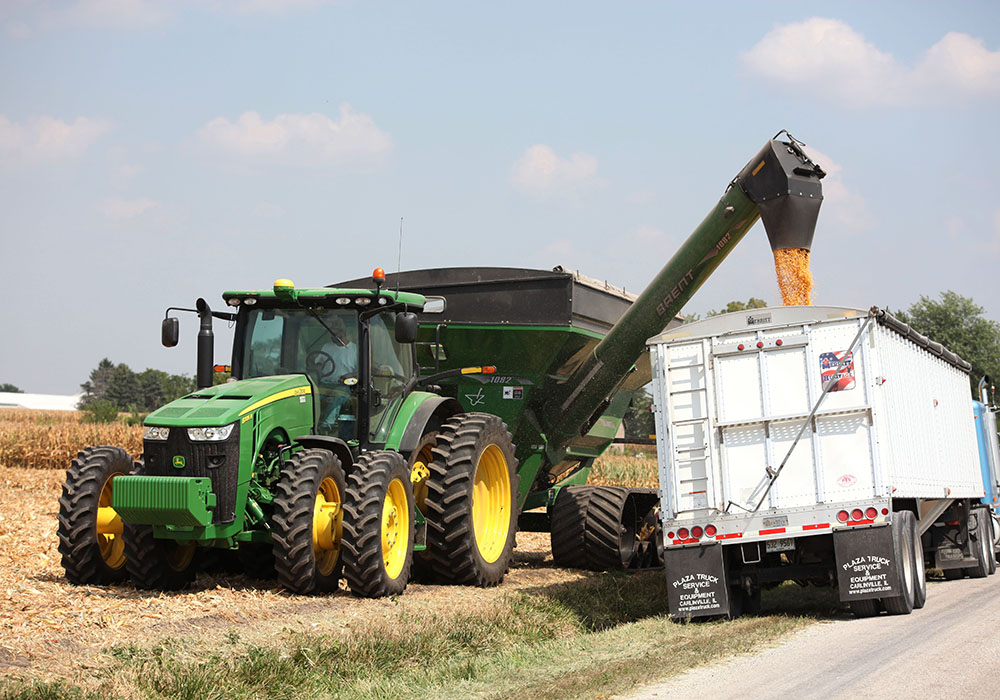LANGHAM, Sask. — The fate of Canadian wheat growers is inextricably tied to that of U.S. corn growers, says a market analyst.
“I think corn is going to lead everything,” said Mike Jubinville, an analyst with MarketsFarm.
“If the corn market doesn’t rally, nothing will rally.”
The wheat outlook on its own is not great. World wheat production and carryout are expected to be record large in 2019-20, according to the International Grains Council.
“That’s why it’s so important for corn to play the leadership role,” Jubinville told a gathering of farmers at the Ag in Motion farm show.
Read Also

Geopolitics can change trade routes
WHISTLER, B.C. — Today’s geopolitical tensions could have dire long-term consequences, says the director of international policy at the University…
He thinks there is a good chance it will play that role. Incessant spring and early summer rains in the U.S. Midwest have resulted in an “extraordinarily late” corn crop.
The shallow-rooted crop will be short and have very little canopy when it goes through the hottest period of summer. Pollination is going to be pushed back to late July or early August to the crowd at Langham, Sask.
“There is lots of potential here for the corn crop to run into trouble,” said Jubinville.
The U.S. Department of Agriculture estimates that growers planted 91.7 million acres of corn and will produce 13.9 billion bushels of the crop. However, that estimate was based on an early-June survey.
Nobody believes those numbers. Jubinville has seen trade estimates as low as 12 billion bu. of production.
The USDA is forecasting two billion bu. of carryout, but he thinks it could be half that.
“If they move from two billion bu. down to one billion bu., that becomes a very different kind of marketplace,” said Jubinville.
“This corn market could potentially come back up to about $5 per bushel. I wouldn’t be surprised.”
The December futures contract hasn’t reached that level since 2014.
Arlan Suderman, chief commodities economist with INTL FCStone, shares that bullish outlook for corn.
He thinks farmers planted 85.8 million acres of the crop and will produce 12.6 billion bu. He is forecasting 1.27 billion bu. of carryout.
That will result in a higher corn price, causing him to reduce feed, ethanol and export demand on his supply and demand balance sheet.
“I’ve done that, and I still get a marketing year average cash price of $4.65 (per bu.),” Suderman said in a recent webcast.
That is well above the USDA’s average cash price estimate of $3.70 for the 2019-20 marketing year.
Jubinville said this year reminds him of 1993, when the U.S. corn crop was also very late. The market rallied through July and then paused until October and November, when the trade realized just how short the crop was.
“That’s when it took off. That’s when the rally started,” he said.
If corn doesn’t rally and pull wheat along for the ride, the outlook for wheat is pretty ho-hum.
Total U.S. wheat carryout for 2018-19 is expected to be 1.07 billion bu., which is about a 50 percent stocks-to-use ratio.
“They’ve got 50 percent of their needs for next year already sitting in the bin before they harvest anything this year,” said Jubinville.
In Canada, the market for No.1 CWRS 13.5 percent protein wheat is around $6 per bushel.
He advised growers to sell some of their wheat if the price rises to $6.50 to $7 per bu. for deferred delivery.
Bruce Burnett, director of markets and weather with MarketsFarm, has done a mini-crop tour of the Canadian Prairies and has found that the wheat crop is looking pretty good.
He is forecasting an average spring wheat yield of 49.5 bu. per acre, which is above the previous five-year average of 48.7 bu. per acre.
Burnett pegged the average durum yield at 36.5 bu. per acre, which is below the previous five-year average of 39 bu. per acre.
















